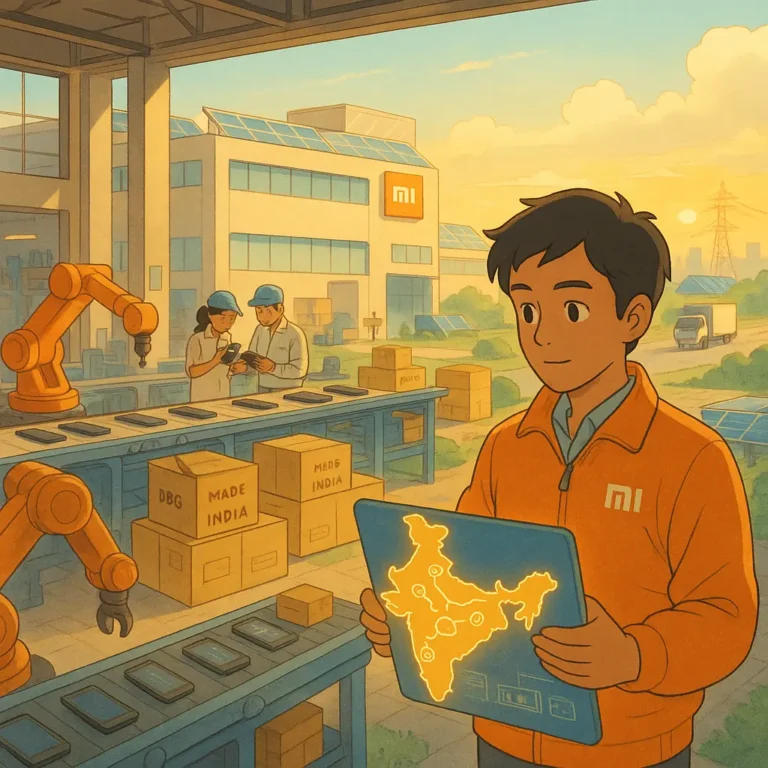Hyundai's semiconductor strategy
In an industry crazy about just-in-time inventory, Hyundai’s semiconductor strategy took the opposite approach in 2020, and it paid off during the global semiconductor shortage of 2021. But what informed that decision?
Article Brief & Key Nuggets:
- Hyundai’s supply chain team defied industry norms by stockpiling semiconductors in late 2020.
- The decision was driven by market signals, past supply shocks, and strong domestic demand.
- Priority supplier relationships and diversified sourcing gave Hyundai a lead over competitors.
- Strategic allocation of chips kept production running while rivals sat idle.
- The story highlights the importance of critical component buffers, swift procurement decisions, and supplier alignment—lessons that any supply chain can apply.
Challenging Just-in-Time in the Automotive Chip Shortage
The 2021 automotive chip shortage exposed a hard truth. Just-in-time isn’t without its flaws. The inventory management technique that many supply chains have come to regard as the holy grail can also fail.
Although in this case, it took a global crisis and a choke point for that to happen.
In late 2020, fears of chip shortage weren’t yet mainstream, but Hyundai’s supply chain and procurement leaders saw the warning signs.
They noticed semiconductor foundries were cutting auto chip production and diverting capacity to electronics. But they also understood before anyone else that cutting orders would mean losing manufacturing slots to gadget makers.
Considering the critical role these chips played in the manufacturing process, the supply chain and leadership decided that Hyundai’s semiconductor strategy would be to buy more chips, not fewer.
Read more: Supply Chain Lessons from the GM Ventilator Project 2020.
The Global Semiconductor Shortage in Brief
The pandemic triggered a sudden collapse in early auto demand, prompting many carmakers to cancel chip orders. However, because more people were at home, the demand for home-friendly electronics, such as laptops, smartphones, and televisions, was higher than ever.
Semiconductor manufacturers naturally reallocated production to meet this high demand. But then, car sales rebounded sooner than expected. Due to the reallocation, there weren’t enough chips in the market to meet these demands.
Automakers without a plan couldn’t get back in the production queue.
By mid-2021, the shortage had cost the global auto industry $110 billion. Major brands, including Volkswagen, GM, and Ford, were forced to idle their plants, park unfinished vehicles, and absorb significant losses.
But Hyundai avoided the worst because it didn’t give up its seat at the table.
Hyundai’s Contrarian Decision to Stockpile Semiconductors
Hyundai’s semiconductor strategy in late 2020 ran counter to industry thinking.
Here is why it happened:
- Supplier signals – Foundries were reallocating capacity away from automotive-grade chips. Canceling orders risked being deprioritized for months.
- Past supply chain shocks – The 2019 Japan–Korea tech-materials dispute disrupted semiconductor inputs. Early 2020 saw wiring harness shortages from China shut down Hyundai plants. These events prompted the company to reassess its inventory risk.
- Domestic demand stability – Although global auto sales were down, strong sales in South Korea during 2020 allowed Hyundai to maintain stable vehicle production.
Hyundai’s supply chain read the market well. So while other automakers were cancelling their orders, Hyundai did the opposite and went all-in:
- Maintained purchase orders despite peers canceling theirs.
- Increased orders in Q4 2020 to build a Hyundai semiconductor stockpile before shortages became severe.
- Leveraged local suppliers, such as Telechips and Samsung Foundry, for priority access to chips.
- Added a new supplier for at least one critical chip to diversify sources.
- Tightened inventory monitoring and checked stock more frequently.
Hyundai’s semiconductor strategy blended foresight with speed because at that moment, it treated semiconductor inventory as insurance, not waste.
Operational Impact of Hyundai’s Semiconductor Strategy
Hyundai entered 2021 with enough chips to keep assembly lines running through the early waves of the shortage. Competitors were halting production, but Hyundai continued to build and ship vehicles.
The result was record-breaking and included:
- Record U.S. sales – Hyundai Motor America hit three consecutive months of all-time highs in spring 2021. May sales rose 56% over 2020 and 36% over 2019.
- Financial gain – First-quarter 2021 profit almost tripled year-on-year to the highest in four years.
- Market share growth – With stock on dealer lots, Hyundai gained customers that competitors couldn’t serve.
But it wasn’t all rosy for Hyundai. The company still faced challenges later in the year. By April 2021, some chip lines ran low, prompting short production pauses.
So, to manage inventory, Hyundai reduced production of less popular sedans and prioritized high-demand SUVs. Even with these measures, production losses were significantly smaller than those of most peers.
Read more: The Failures and Success of Walmart’s RFID Mandate in 2003.
Lessons from Hyundai’s Semiconductor Strategy Story
The Hyundai supply chain and semiconductor strategy in 2020 and 2021 shows why agility and resilience are as important as efficiency in modern supply chains.
Here are some of the key takeaways:
1. Critical Components Deserve Buffer Inventory.
For items like semiconductors with long lead times and few substitutes, a just-in-case approach often beats a just-in-time approach. A small stockpile can keep production running when global supply is tight.
For example, a home appliance manufacturer could stockpile three months’ worth of control boards during peak demand seasons.
2. Read Supplier Behavior as an Early Warning Signal
Hyundai’s supply chain and leadership acted because procurement noticed foundries shifting capacity. Supplier production changes can be a stronger risk signal than market forecasts.
For example, if a steel mill reallocates capacity to construction customers, an automotive parts maker should secure extra coil supply.
3. Leverage Strategic Supplier Relationships.
Hyundai’s local chip partners prioritized its orders. Building supplier dependency on your business increases your bargaining position in times of crisis or shortage.
4. Diversify Sources Before a Crisis Hits.
Adding an extra supplier for a critical component before the shortage helped Hyundai maintain flow. Multi-sourcing can prevent a total stoppage if one line goes down.
5. Prioritize Output for Maximum Return.
Hyundai allocated chips to high-margin, high-demand vehicles. This maximized revenue per chip. A similar approach works in any product mix scenario.
Read more: Why The $4B H&M’s Inventory Failure Happened.
How African Supply Chains Can Apply These Lessons
African manufacturers, distributors, and logistics providers face their own supply shocks—currency swings, port congestion, and import bottlenecks. But Hyundai’s story offers steps that can strengthen any supply chain:
- Identify critical inputs – Map your bill of materials or service dependencies to see which items halt operations if delayed.
- Hold strategic safety stock – Even a few weeks’ buffer for key imports can maintain service levels during disruptions.
- Develop regional supplier links – Build ties with suppliers on the continent who can prioritize your orders when global channels clog.
- Create alternate sourcing plans – Approve substitute materials or components in advance to avoid production stoppage.
- Train procurement teams to monitor market signals – Track changes in supplier output, shipping schedules, and raw material allocation.
- Have a product or service prioritization plan – Know in advance which orders or products get priority if capacity drops.
In practice, this could mean a Nigerian food processor keeping an extra month’s worth of imported seasoning stock, or a South African vehicle assembler sourcing body panels from both local and overseas suppliers.
The cost of holding that buffer can be far less than the cost of halted production.
Wrap Up
Hyundai’s semiconductor strategy in 2020 and 2021 demonstrated the value of acting early, maintaining a safety net of critical parts, and aligning suppliers with your priorities. It wasn’t blind luck—it was a calculated decision backed by market awareness and past experience.
For supply chain leaders, the lesson is clear: efficiency matters, but resilience keeps the doors open.

Obinabo Tochukwu Tabansi is a supply chain digital writer (Content writer & Ghostwriter) helping professionals and business owners across Africa learn from real-world supply chain wins and setbacks and apply proven strategies to their own operations. He also crafts social content for logistics and supply chain companies, turning their solutions and insights into engaging posts that drive visibility and trust.







